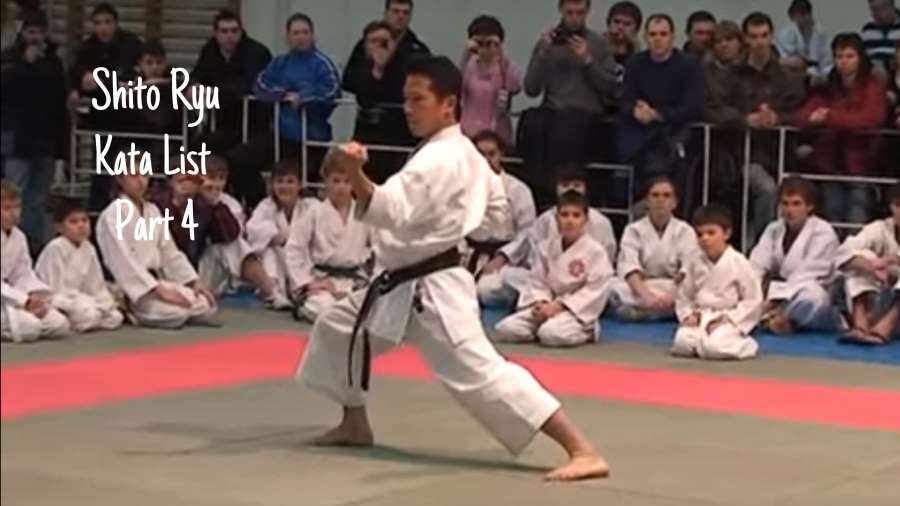Karate is a well-known type of martial art that was developed in the Ryukyu Kingdom and was mainly developed from Ryukyuan Martial arts which also mainly had an impact from Chinese martial arts, particularly from Fujian White Crane.
Karate is divided into many styles, each with their different training methods, focuses, and cultures; though they mainly originate from the historical Okinawan parent styles of Naha-te, Tomari-te and Shuri-te. Today we will find out about the most effective Karate Style.
Read more about Most Physical NBA players
Goju Ryu

Goju Ryu In Japanese means “ hard soft style” And is one of the main Okinawan styles which is made up of both hard and soft techniques. Both the principles of Hard and soft techniques come from the two books which were used by the Okinawan Masters in the 19th and 20th centuries, the Bubishi.
Go means hard which includes the close-handed combat skills in the linear straight line and Ju refers to the soft techniques which are the open-hand techniques and the other circular movements.
Goju Ryu is the combination of both the hard and soft techniques of the circular and linear techniques is a curriculum and systematic manner which combines hard striking attacks such as kicks and close-hand punches with softer open-hand circular techniques for attacking, blocking, and controlling the opponent, including joint locks, grappling, takedowns, and throws. and this is one of the reason Most Effective Karate Style in the form of Karate.
Major emphasis is always given to the breathing style in all of kata with a special emphasis on Sanchin Kata which is one of the two major Kata. The second Kata is called Tensho which puts emphasis on teaching the students about the soft part of Gojo Ryu.
Shotokan

Shotokan is a style of Karate and a part of martial arts which was developed by Gichin Funakoshi and his son Gigo Yoshitaka Funakoshi. Gichin Funakoshi was born in Okinawa and till date he is highly recognized as Gichin was the one who made the “ Karate Do “ as popular as it is today by public demonstrations and by establishing several Karate Universities including those at Keio, Waseda, Hitotsubashi (Shodai), Takushoku, Chuo, Gakushuin, and Hosei.
Gichin had left an influence that even after his death, his top students of the universities and the students outside of the dojo kept on teaching karate to students. However, after a lot of internal disagreements, the organization had to split up and form the Japan Karate Association which was headed by Masatoshi Nakayama and the Shotokai which was headed by Motonobu Hironishi and Shigeru Egami), followed by many others—so that today there is no single “Shotokan school”, although they all bear Funakoshi’s influence.
Shotokan is the most effective karate style and is also considered as the most widely practised and famous karate style.
Shito Ryu

Shito Ryu is a style of Karate which was founded in the year 1934 by the legendary Kenva Mabuni. Shito Ryu is the synthesis of the Okinawan Shuri-te and Naha-te schools of karate and today is considered one of the four main styles of the art.
Kenva Mabuni was born in Shuri Okinawa in the year 1889. Kenva was the 17th descendant of the legendary warrior Uni Ufugusuku Kenyu. He began teaching students in the art of Shuri Te when he was just 13 years old. He trained diligently for several years, learning many kata. It was Itosu who first developed the Pinan kata, which were possibly derived from the Kusanku form.
He had always remained true to his teachings which were taught to him by his masters. After Kenwa died on 23rd May 1952, a dispute broke out between his two sons Kenzo and Kenei regarding the lineage of the style their father had developed.
Shito Ryo is a combination style which looks forward in uniting the diverse roots of karate. On one side, Shito Ryu has the physical strength and long powerful stances of the Shuri Te derived styles from the Shorin Ryu and Shotokan while on the other hand it also has the circular and eight-directional movements, breathing power, and hard and soft characteristics of Naha-te styles such as Uechi-ryu and Gojo Ryu.
Wado Ryu

Wado Ryu is one of the four major karate styles and is one of the most effective karate styles which was developed by the legend Hironori Otsuke. The style is not only made up of strikes, but it also involves Tai Sabaki, throws and joint locks. It has its origins in the Shindo Yoshin Ryu Jujitsu, then in the Pre Shotokan karate or the Tomari Te karate then was also influenced by Shito Ryu.
The name Wado-ryu has three parts: Wa, do, and ryu. Wa means “harmony,” do (same character as tao) means “way,” and ryu means “school” or “style”. From one side Wado Ryu might be considered as a style of Jiu Jitsu instead of Karate. The founder, Hironori Otsuke had embraced jiu jitsu as well and was the chief instructor of Jiu Jitsu at his time.
To an untrained observer, Wado – ryu might look similar to other styles of karate, such as Shito ryu or Shorin ryu. Most of the underlying principles, however, were derived from Shindō Yōshin-ryū, an atemi waza focused style of Jujutsu. A block in Wadō may look much like a block in Goju or Uechi ryu, but they are executed from different perspectives.
